Transforming an Airport
by Todd Miller
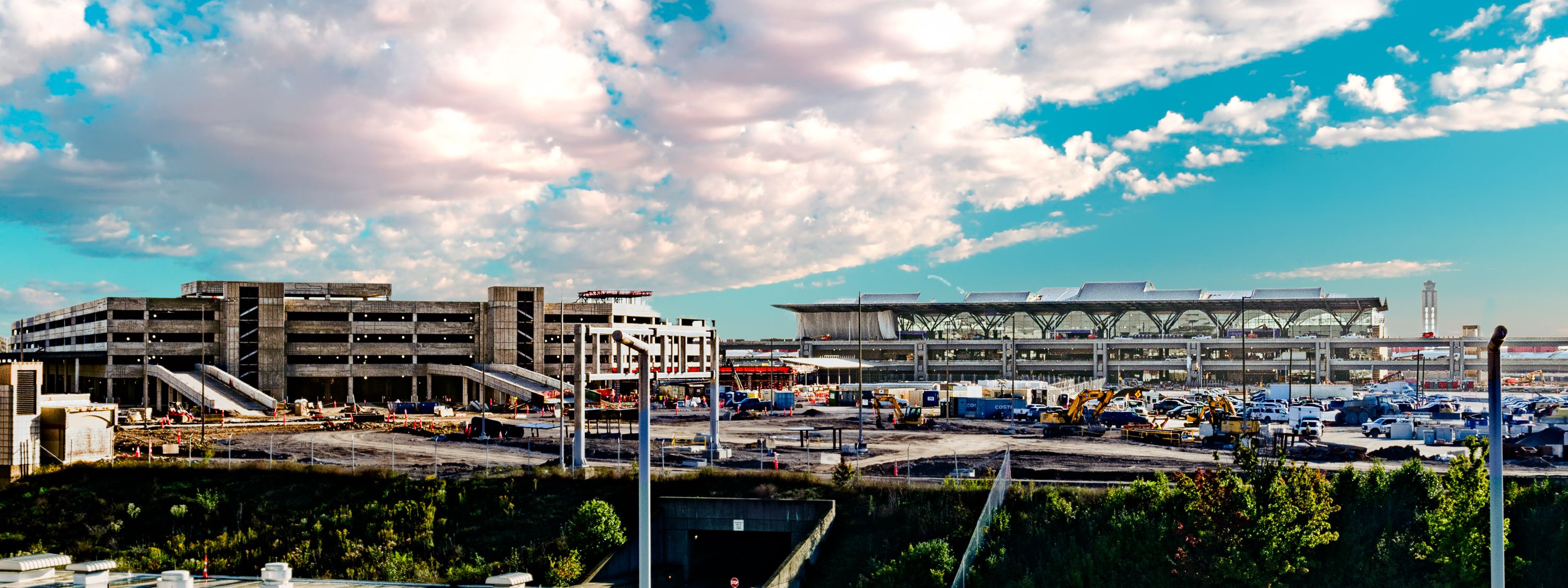
Almost 25 years ago, the construction of PNC Park and Acrisure Stadium (formerly Heinz Field) transformed Pittsburgh’s North Shore along the Allegheny River and redefined the game-day experience for Pirates and Steelers fans. These iconic venues also rekindled a sense of pride among Tri-State Area residents. Today, the $1.7 billion Terminal Modernization Program (TMP) at Pittsburgh International Airport (PIT) is a similarly transformative undertaking that can serve as a welcoming front door to the Pittsburgh region.
By incorporating the latest design features and construction materials, the TMP offers travelers and residents a unique sense of place that is seldom found at airports. Additionally, the TMP serves as a key public works project that enhances Pittsburgh’s transition from a hub of heavy industry to a leader in technological innovation.
Under the leadership of Christina Cassotis, CEO of the Allegheny County Airport Authority (ACAA), the organization that manages and maintains PIT and Allegheny County Airport in West Mifflin, the airport is being transformed from a hub facility that no longer matches the needs of the air travel market to one that is ideal for Pittsburgh and the Tri-State Area that PIT serves.
One Goal to Achieve
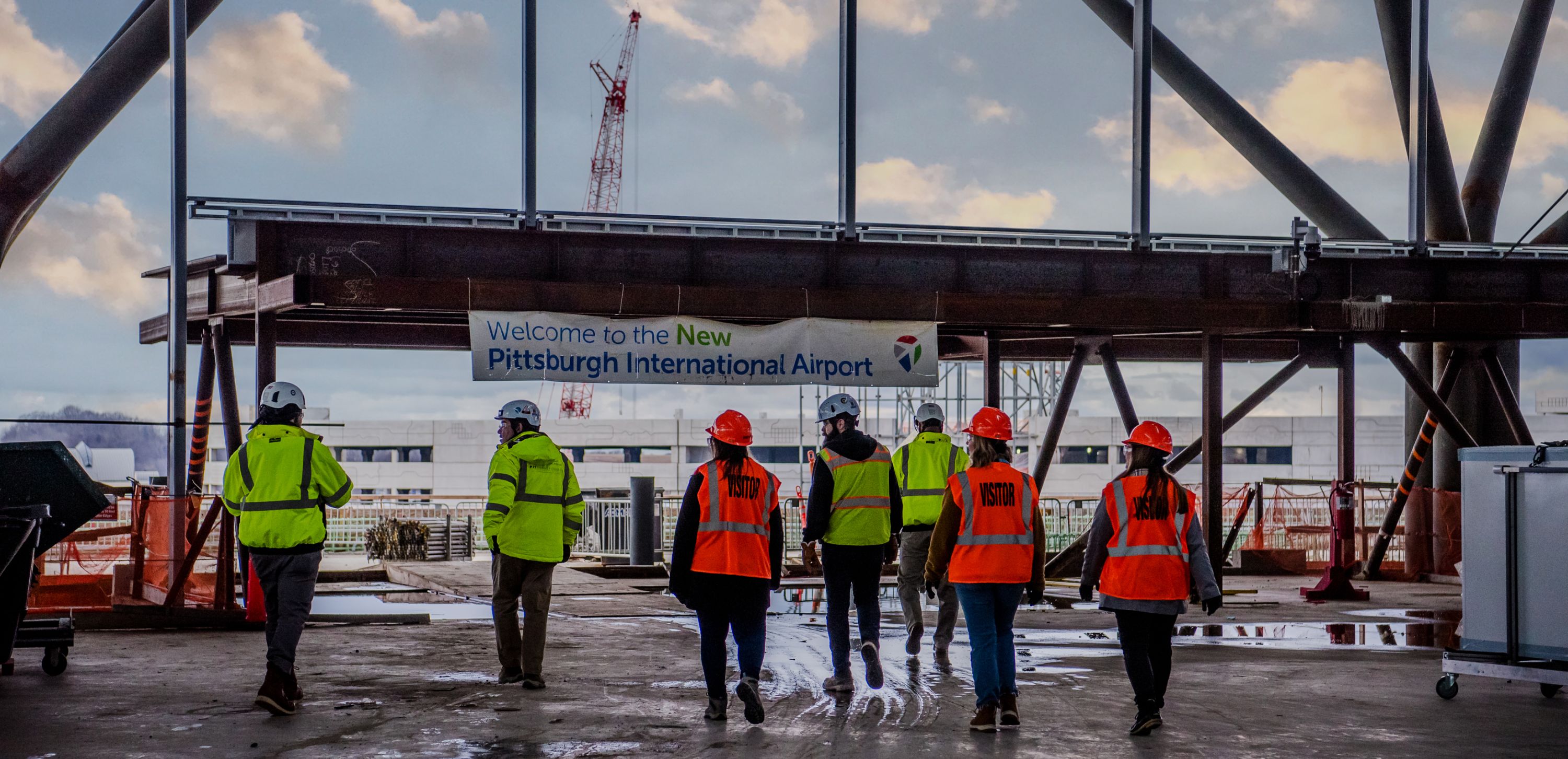 “When I was hired 10 years ago, the only thing that mattered to the airport’s board of directors was whether I could bring in more flights,” says Cassotis, who came to Pittsburgh after spending more than 20 years as an aviation industry consultant and communications official at the Massachusetts Port Authority (Massport), the independent public agency that owns and operates Boston Logan Airport.
“When I was hired 10 years ago, the only thing that mattered to the airport’s board of directors was whether I could bring in more flights,” says Cassotis, who came to Pittsburgh after spending more than 20 years as an aviation industry consultant and communications official at the Massachusetts Port Authority (Massport), the independent public agency that owns and operates Boston Logan Airport.
While increasing the number of takeoffs and landings at PIT, Cassotis also persuaded the ACAA Board of Directors, elected officials, and area business leaders to understand that Pittsburgh would never again become a hub and that there had to be a new way forward. They embraced her and her team’s vision and enabled her to take the TMP from concept to completion. The current facility was built for a different time and a different purpose – as a hub for one carrier – and no longer met the needs of the Pittsburgh market today.
Throughout her tenure as CEO of the ACAA, Cassotis has been impressed by the strong attachment that area businesspeople and leisure travelers have for PIT. “This community really cares about their airport,” says Cassotis.
“Having worked in Boston and visited many other places, I can tell you that nobody cares about their airport like the people in Pittsburgh. It’s what brought me here in the first place, and it’s what motivates me to stay.”
Combining a breadth and depth of industry experience with a range of contacts in the fields of airport design and management, Cassotis led her team to envision a new way of thinking about airport design and functionality.
“This airport is one of the first ones designed in a post-pandemic environment,” says Paul Hoback, Executive Vice President and Chief Development Officer of the Allegheny County Airport Authority (ACAA). “It will feature outdoor terraces accessible to passengers after they clear security. You can count on one hand the number of terminals in the world where you can go outdoors after clearing security. Usually, you need a VIP pass to enjoy that kind of experience.”
Improved amenities and efficient operations can leave a positive impression on visitors and residents alike and help to strengthen the perception that the Pittsburgh region offers a high quality of life and is a great place to do business. While the TMP primarily focuses on improving the passenger experience, the enhanced facilities and increased operational efficiency will bring operational cost savings to airlines.
When the four-year project is completed later this year, the new facility will enhance the passenger experience and foster regional pride with a functional and attractive new “front door” for the region emblematic of the thriving Pittsburgh of today for those coming to visit or do business.
Like the stadiums, the airport project demonstrates the Pittsburgh region’s ongoing commitment to innovation and a brighter future that encompasses robust economic growth.
The project, which uses no local or state taxpayer dollars, also aims to revitalize the airport’s infrastructure, including roadway systems and parking. It has been funded through airport-generated revenues such as landing rights and gate rental fees paid by airlines; passenger facility charges, which airports across the country levy for infrastructure improvements on FAA-approved projects; rental car fees; revenues generated by retail businesses in the terminal and on the airport grounds; bonds; and federal grants.
As for non-aviation land development that can make PIT a center of commercial activity, Hoback and his colleagues are anticipating that Neighborhood 91, the world’s first end-to-end additive manufacturing production campus, will expand to occupy some of the soon-to-be-former parking areas and that there will be additional growth along the airport’s central spine.
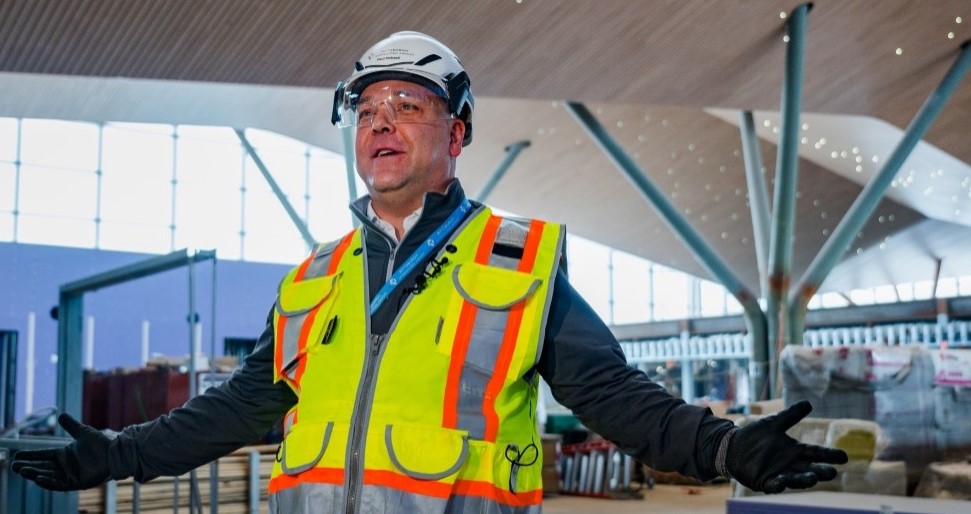 Necessity is the Mother of Modernization
Necessity is the Mother of Modernization
The existing terminal at PIT, constructed in 1992, was designed to serve as a hub for US Airways. In the aftermath of the 9/11 terrorist attacks that saw air travel plummet and the airline declaring bankruptcy in 2004, the facility became misaligned with the needs of an origin-and-destination market.
According to Hoback, “The TMP is a right-sizing project. When the airport was a hub, 80 percent of the passengers were connecting to other flights, and 20 percent originated in Pittsburgh. Since then, 98 percent of passengers originate in Pittsburgh.”
Escalating maintenance costs, inefficient passenger flow, and outdated passenger accommodations and infrastructure that do not meet 21st-century travelers’ needs, such as an undersized security checkpoint, underscored the necessity for modernization. The TMP addresses these issues by consolidating landside and airside operations into a single, connected facility.
The new terminal is connected to the existing airside X-shaped terminal and eliminates the need for the automated tram that transports passengers to and from the landside and airside buildings. The ACAA is hoping to find an alternate use for the landside structure and will raze it if necessary.
In keeping with the desire to give people a sense of place and highlight the natural beauty and built environment of Pittsburgh and the surrounding region the airport serves, the new terminal building will connect to the existing airside terminal with an enclosed pedestrian bridge that replicates the experience of driving through the Ft. Pitt Tunnels toward Downtown. Travelers will then emerge in a vibrant airside core surrounded by concessions and activities.
According to Hoback, “The airside core will be similarly sized to Market Square. We hope it turns ‘gate huggers’ into passengers who enjoy the many things the new airport will offer.”
According to Hoback, the TMP has generated about $2.5 billion in economic activity over the past five years and has created nearly 14,300 direct and indirect jobs. That figure includes more than 7,800 direct temporary design and construction jobs, as well as over 6,500 indirect spin-off jobs in the region. Beyond job creation, the TMP will have contributed about $1 billion in direct labor income and $700 million in the purchase of goods and services.
About 90 percent of the materials workers are using have been manufactured in the region. For example, the structural steel was fabricated by Sippel Steel in Ambridge in the former American Bridge facility, located nine miles from the airport. It is the same facility where steel was manufactured to construct New York’s Chrysler Building and San Francisco’s Golden Gate Bridge nearly a century ago.
Additionally, PPG is supplying special paints that dry quickly upon application, making them ideal for re-painting and touch-ups in areas with heavy passenger traffic.
Origin of the Concept
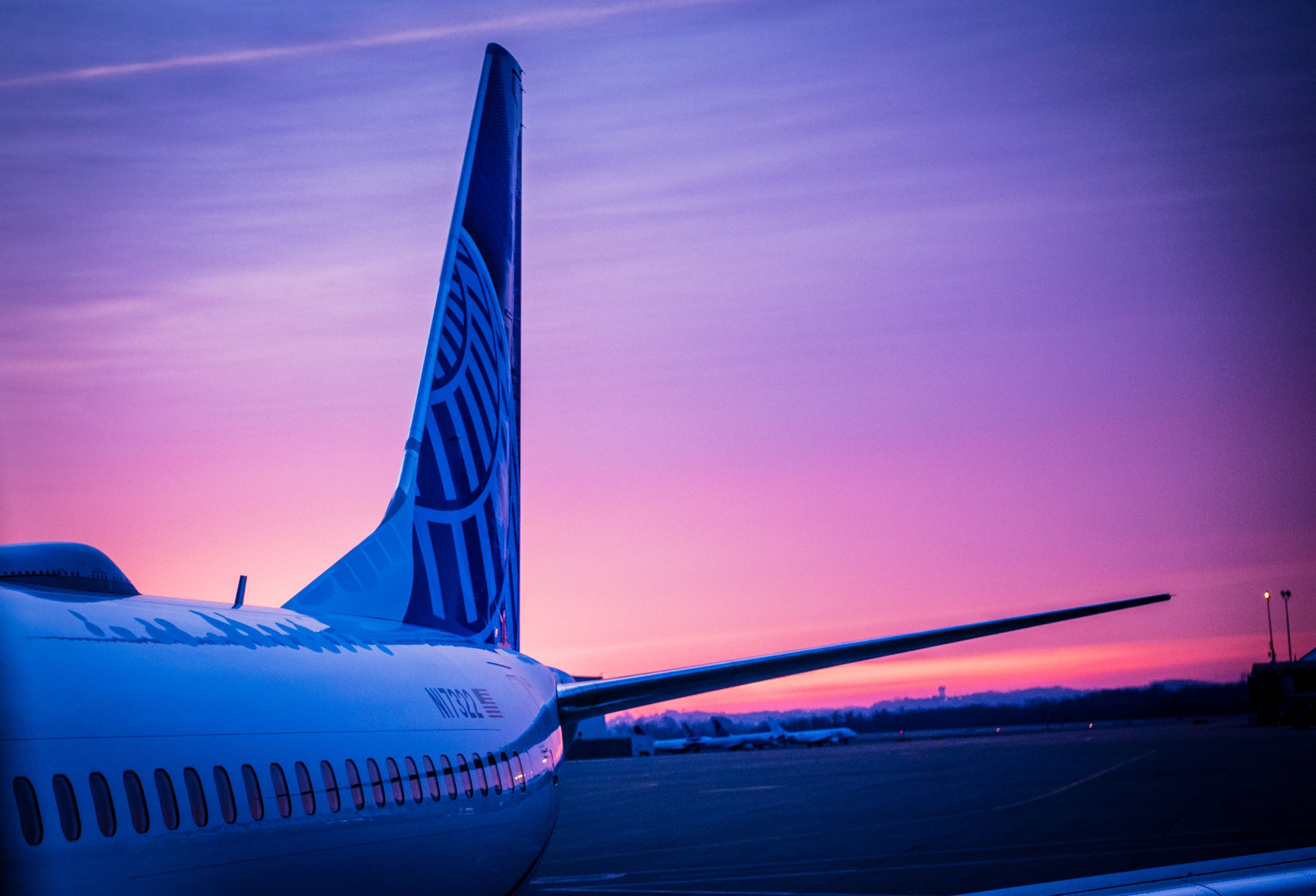 The TMP emerged from a comprehensive Master Plan Update initiated in 2013 by the ACAA. This plan aimed to align the airport’s facilities with current and future transportation and technology needs. The realization that the existing terminal no longer met the demands of a predominantly origin-and-destination passenger base led to the proposal of a new terminal adjacent to the existing airside facility. This strategic move was designed to streamline operations, enhance passenger experience, and reduce costs.
The TMP emerged from a comprehensive Master Plan Update initiated in 2013 by the ACAA. This plan aimed to align the airport’s facilities with current and future transportation and technology needs. The realization that the existing terminal no longer met the demands of a predominantly origin-and-destination passenger base led to the proposal of a new terminal adjacent to the existing airside facility. This strategic move was designed to streamline operations, enhance passenger experience, and reduce costs.
While the TMP is tailored to Pittsburgh’s unique needs, it draws inspiration from successful airport modernization projects worldwide. Airports that have effectively adapted to changing aviation landscapes by consolidating operations and enhancing passenger experiences have served as examples. The TMP incorporates best practices from those projects, emphasizing efficiency, sustainability and passenger-centric design.
“We benchmarked many different airports, including London Heathrow, Schiphol Airport in Amsterdam, Frankfurt Airport in Germany, and Incheon Airport in Seoul, South Korea,” says Hoback. “We also went to a number of U.S. airports, including New Orleans, Salt Lake City and Raleigh-Durham, saw their modernization projects, talked to teams, learned best practices, and applied them to our situation, especially as they relate to attracting and retaining retail tenants,” says Hoback.
The new terminal’s design emphasizes nature, technology and community, reflecting Pittsburgh’s regional identity. Features include separate levels for departing and arriving passengers, expanded TSA checkpoints, and shorter distances for passengers to walk from ticket counters to gates and from gates to the baggage claim area.
In anticipation of changing demand for passenger traffic and the services passengers need or want, the modernization program emphasizes flexibility and adaptability borne of best practices industrywide and the experience of over-reliance on a hub partner.
Improving the Passenger Experience
The new terminal design streamlines passenger flow and reduces the time it takes to move from curb to gate by 50 percent. Features such as modernized ticketing and baggage claim, expanded checkpoints to expedite security screening, intuitive wayfinding, and consolidated services contribute to passengers experiencing a more efficient and enjoyable journey through the airport. These improvements aim to reduce wait and walking times and enhance satisfaction.
“Airlines want to fly into airports and expand route offerings where people want to go, and where airport operations are efficient,” says Hoback. “The TMP addresses both of those criteria.”
To help minimize the time passengers spend at security checkpoints, the new system will use robots and mobile inspection tables to take selected bags off the conveyor belt and drive them to TSA agents for inspection. After an inspection is completed, the robot will drive the bag back to the baggage belt. Some of those technologies were developed at Carnegie Mellon University and by companies in the Pittsburgh region.
When passengers arrive, they will have a short walk to the baggage claim area. The new baggage system will feature magnetic motors that allow for quiet operation and eliminate the need for workers to wear hearing protectors that the current 95 decibel system requires. It is a noise level at which sustained exposure could result in hearing loss.
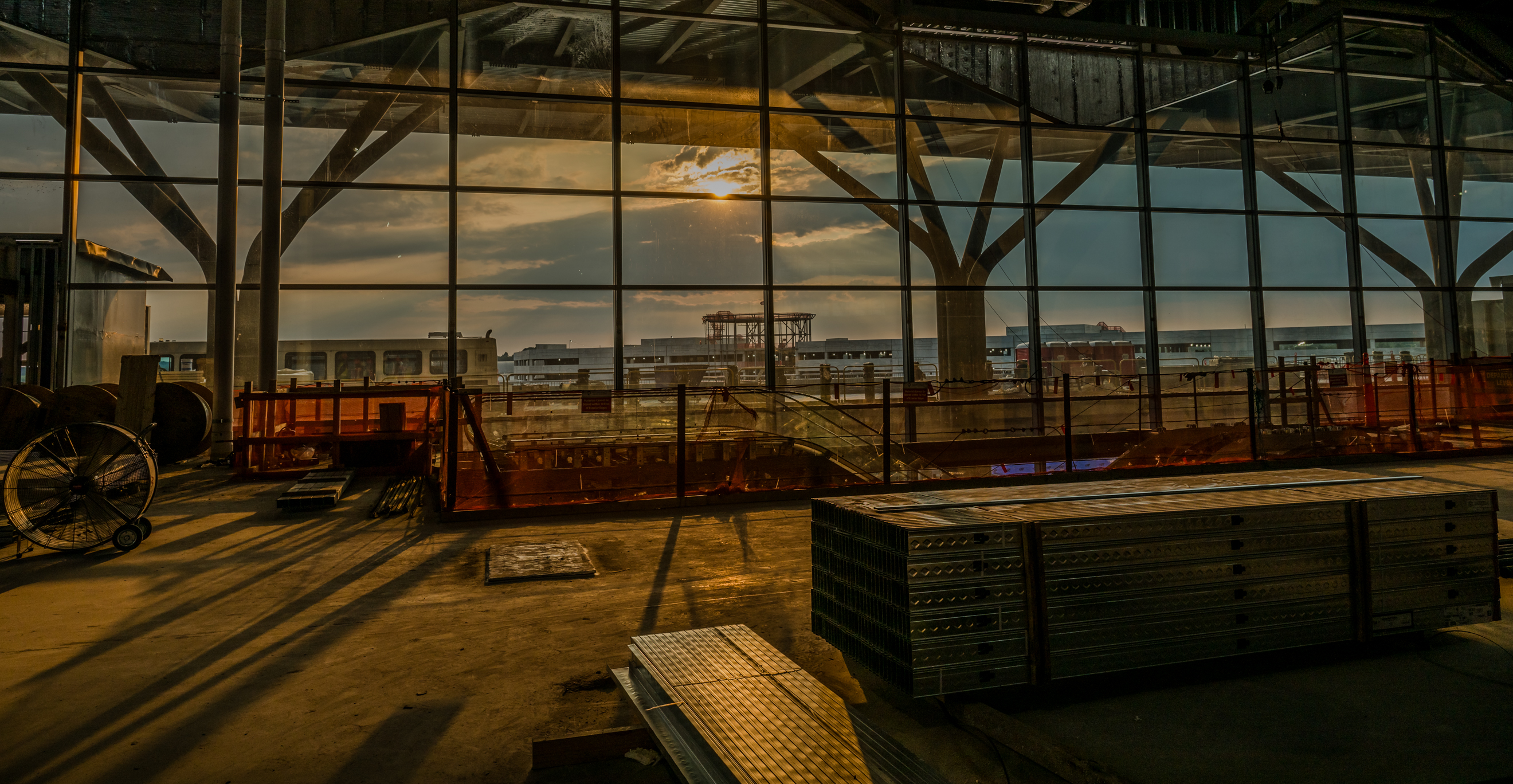 As for dropping off passengers and picking them up, the new terminal features a new roadway system and a three-level bridge to reduce traffic congestion. While waiting for arriving passengers, drivers can park in a lot close to the terminal before receiving cell phone notifications that their loved ones or ride-share passengers are at curbside.
As for dropping off passengers and picking them up, the new terminal features a new roadway system and a three-level bridge to reduce traffic congestion. While waiting for arriving passengers, drivers can park in a lot close to the terminal before receiving cell phone notifications that their loved ones or ride-share passengers are at curbside.
For passengers leaving their cars at the airport, a new complex includes a 3,300-car garage that triples the amount of covered parking at PIT and an additional 2,700 spaces, significantly increasing the total number of parking spaces on the airport grounds. Features such as a state-of-the-art space-finder system, clear signage, and advanced, eco-friendly snow-melt technology will enhance the parking experience.
Additionally, the new configuration will streamline access to taxis, ride-share vehicles, and public transit options such as the Airport Flyer bus run by Pittsburgh Regional Transit.
The TMP also expands the area for concessions and retail, providing passengers with a wider variety of shopping and dining options, including an emphasis on local retailers to showcase Pittsburgh’s unique offerings. The ACAA has implemented strategies to increase participation in the TMP by women-, minority-, and veteran-owned businesses. Initiatives have included unbundling large contracts into smaller ones to provide more opportunities for smaller firms.
The ACAA has also held outreach events such as Industry Days and Vendor Product Pitch Fairs to engage more local businesses as retailers in the terminal. As a result, more than 60 retail businesses owned by women, minorities and veterans have been involved with the TMP, earning more than $150 million in contracts over the past several years, with more to follow.
To further increase foot traffic, the ACAA is hoping to re-launch the My PIT Pass program that, pre-pandemic, allowed non-ticketed passengers to enter the airside terminal and patronize businesses during the non-peak travel hours of 9:00 a.m. to 5:00 p.m., Monday through Friday.
Although in recent years the occupants of PNC Park and Acrisure Stadium have not won any championships, Tri-State Area residents can soon rejoice in having an airport that is likely to win awards for its design and functionality.